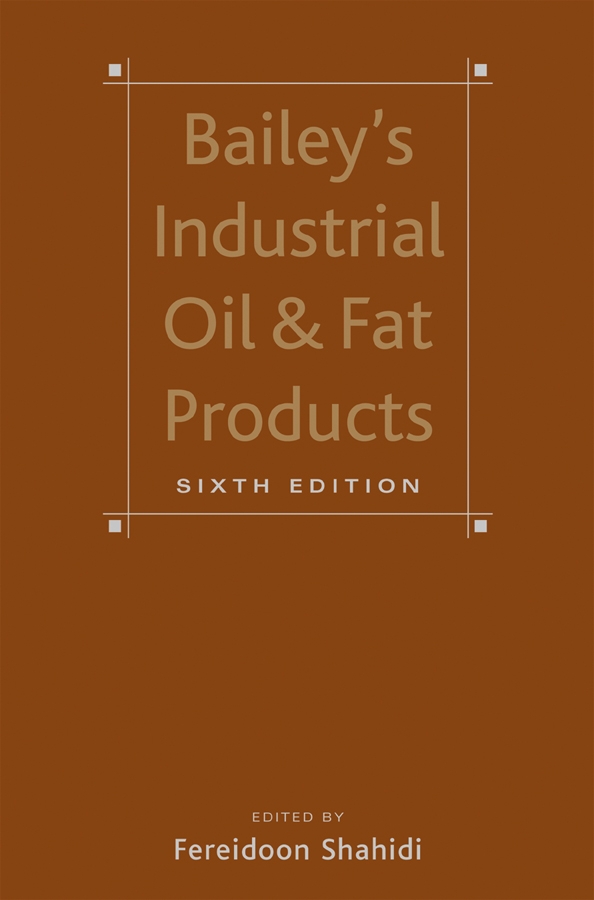Lipids, Lipoproteins, and Health
Cibele P.B. Furlan
University of Campinas—UNICAMP, Campinas, São Paulo, Brazil
Search for more papers by this authorAdriano C. de Camargo
Pontificia Universidad Católica de Chile, Santiago, Chile
Search for more papers by this authorMario R. Marostica Jr.
University of Campinas—UNICAMP, Campinas, São Paulo, Brazil
Search for more papers by this authorCibele P.B. Furlan
University of Campinas—UNICAMP, Campinas, São Paulo, Brazil
Search for more papers by this authorAdriano C. de Camargo
Pontificia Universidad Católica de Chile, Santiago, Chile
Search for more papers by this authorMario R. Marostica Jr.
University of Campinas—UNICAMP, Campinas, São Paulo, Brazil
Search for more papers by this authorAbstract
Current data highlight the importance of unsaturated fatty acids (UFA) in maintaining the integrity of intestinal epithelial barrier function. In contrast, breakdown of intestinal barrier function due to high intake of saturated fatty acids (SFA) facilitates lipopolysaccharides (LPS) migration into the bloodstream, thus enabling systemic inflammation, which is common to obesity, diabetes, and cardiovascular disease. Furthermore, the axes for the formation of lipoproteins (LP) are the intestine and liver. The first one produces LP from dietary lipids, while in the liver LP are generated from endogenous lipids. Therefore, the role of intestine in several chronic ailments has been in the spotlight. The benefits of omega-3 and omega-6 fatty acids have been covered in other articles in this series. Therefore, this contribution summarizes the potential of dietary lipids in improving health by describing the role of omega-9 fatty acids and its sources in influencing gut health and beyond.
References
- 1Nguyen, D.M. and El-Serag, H.B. (2010). Gastroenterol. Clin. N. Am. 39: 1–7.
- 2Adair, L.S., Ng, S.W., and Popkin, B.M. (2012). Nutr. Rev. 70: 3–21.
- 3 WHO (2006). Global Report on Diabetes. WHO.
- 4Poirier, P., Giles Thomas, D., Bray George, A. et al. (2006). Circulation 113: 898–918.
- 5Dandona, P., Aljada, A., and Bandyopadhyay, A. (2004). Trends Immunol. 25: 4–7.
- 6Lumeng, C.N., Bodzin, J.L., and Saltiel, A.R. (2007). J. Clin. Invest. 117: 175–184.
- 7Furlan, C.P.B., Valle, S.C., Östman, E. et al. (2017). J. Funct. Foods 38: 349–354.
- 8Oliveira, V., Marinho, R., Vitorino, D. et al. (2015). Endocrinology 156: 4033–4046.
- 9Lee, J.Y., Sohn, K.H., Rhee, S.H., and Hwang, D. (2001). J. Biol. Chem. 276: 16683–16689.
- 10Inoue, T., Tanaka, M., Masuda, S. et al. (2017). Biochim. Biophys. Acta Mol. Cell Biol. Lipids 1862: 552–560.
- 11Zhao, Y., Joshi-Barve, S., Barve, S., and Chen, L.H. (2004). J. Am. Coll. Nutr. 23: 71–78.
- 12Stoll, L.L., Denning, G.M., and Weintraub, N.L. (2004). Arterioscler. Thromb. Vasc. Biol. 24: 2227–2236.
- 13Gropper, S.S., Smith, J.L., and Groff, J.L. (2009). Advanced Nutrition and Human Metabolism. Belmont, CA: Wadsworth Cengage Learning.
- 14Pekkanen, J., Linn, S., Heiss, G. et al. (1990). N. Engl. J. Med. 322: 1700–1707.
- 15de Camargo, A.C., Schwember, A.R., Parada, R. et al. (2018). Int. J. Mol. Sci. 19: 3498.
10.3390/ijms19113498 Google Scholar
- 16Neves, A.L., Coelho, J., Couto, L. et al. (2013). J. Mol. Endocrinol. 51: R51–R64.
- 17Kesaniemi, Y.A. and Grundy, S.M. (1983). Arteriosclerosis 3: 170–177.
- 18Spickett, C.M., Webb, D.J., Attina, T., and Erridge, C.A. (2007). Am. J. Clin. Nutr. 86: 1286–1292.
- 19Kalupahana, N.S., Moustaid-Moussa, N., and Claycombe, K.J. (2012). Mol. Asp. Med. 33: 26–34.
- 20Pauli, J.R., Cintra, D.E., Souza, C.T., and Ropelle, E.R. (2009). Arq. Bras. Endocrinol. Metab. 53: 399–408.
- 21Rocha, D.M., Caldas, A.P., Oliveira, L.L. et al. (2016). Atherosclerosis 244: 211–215.
- 22Cani, P.D., Amar, J., Iglesias, M.A. et al. (2007). Diabetes 56: 1761.
- 23Zihni, C., Mills, C., Matter, K., and Balda, M.S. (2016). Nat. Rev. Mol. Cell Biol. 17: 564.
- 24Odenwald, M.A. and Turner, J.R. (2017). Nat. Rev. Gastroenterol. Hepatol. 14: 9.
- 25Moreira, A.P.B., Texeira, T.F.S., Ferreira, A.B. et al. (2012). J. Nutr. 108: 801–809.
- 26Guo, S., Nighot, M., Al-Sadi, R. et al. (2015). J. Immunol. 195: 4999.
- 27Lumeng, C.N. and Saltiel, A.R. (2011). J. Clin. Invest. 121: 2111–2117.
- 28Rolo, A.P., Teodoro, J.S., and Palmeira, C.M. (2012). Free Radic. Biol. Med. 52: 59–69.
- 29Wang, H., Liu, H., Jia, Z. et al. (2010). Am. J. Physiol. 298: F754–F762.
- 30Martín-Peláez, S., Mosele, J.I., Pizarro, N. et al. (2017). Eur. J. Nutr. 56: 119–131.
- 31Leal, V.O. and Mafra, D. (2013). Clin. Chim. Acta 419: 87–94.
- 32McArdle, M.A., Finucane, O.M., Connaughton, R.M. et al. (2013). Front. Endocrinol. 4 (52-52).
- 33Jacobs, M.D. and Harrison, S.C. (1998). Cell 95: 749–758.
- 34Sarkar, F.H., Li, Y., Wang, Z., and Kong, D. (2008). Int. Rev. Immunol. 27: 293–319.
- 35Jung, S.H., Park, H.S., Kim, K.S. et al. (2008). J. Nutr. Biochem. 19: 371–375.
- 36Zolotnik, I.A., Figueroa, T.Y., and Yaspelkis, B.B. (2012). Life Sci. 91: 816–822.
- 37McNamara, J.R., Small, D.M., Li, Z., and Schaefer, E.J. (1996). J. Lipid Res. 37: 1924–1935.
- 38Ahmed, M.H., Abu, E.O., and Byrne, C.D. (2010). Prim. Care Diabetes 4: 129–137.
- 39Younossi, Z.M., Koenig, A.B., Abdelatif, D. et al. (2016). Hepatology 64: 73–84.
- 40Byrne, C.D. (2010). Prostaglandins Leukot. Essent. Fatty Acids 82: 265–271.
- 41Lottenberg, A.M., Afonso, M.S., Lavrador, M.S.F. et al. (2012). J. Nutr. Biochem. 23: 1027–1040.
- 42Kohjima, M., Enjoji, M., Higuchi, N. et al. (2007). Int. J. Mol. Med. 20: 351–358.
- 43Walldius, G. and Jungner, I. (2004). J. Intern. Med. 255: 188–205.
- 44Shimomura, I., Matsuda, M., Hammer, R.E. et al. (2000). Mol. Cell 6: 77–86.
- 45Gormaz, J.G., Rodrigo, R., Videla, L.A., and Beems, M. (2010). Progr. Lipid Res. 49: 407–419.
- 46Li, J., Huang, J., Li, J.S. et al. (2012). J. Hepatol. 56: 900–907.
- 47Choi, S.H. and Ginsberg, H.N. (2011). Trends Endocrinol. Metab. 22: 353–363.
- 48Henao-Mejia, J., Elinav, E., Jin, C. et al. (2012). Nature 482: 179.
- 49Duval, C., AugÉ, N., Frisach, M.F. et al. (2002). Biochem. J. 367: 889.



